After taking a long ride on your motorcycle, you reach your destination and it’s time to park. The last thing you want is for someone to get their hands on your precious helmet, but what can you do? Well, there are ways to keep your helmet safe and secure when parked – from minor adjustments to more permanent solutions. This blog post will discuss tips for storing your motorcycle helmet and how to keep it secure during those stops for fuel.
Table of Contents
What are Motorcycle Helmets for?
Motorcycle helmets are designed to protect the rider’s head in the case of an accident. They are typically made of a hard outer shell, usually constructed from thermoplastic or composite materials such as fiberglass, Kevlar, or carbon fiber. This shell is then filled with an energy-absorbing foam liner that helps cushion and protect the head from impact forces. The helmet also includes straps and other fittings for securing it to the rider’s head.
Motorcycle helmets are a legal requirement in some jurisdictions, while in others they are optional but highly recommended. Regardless of the law, all riders should wear properly fitted helmets to ensure their safety when out on the open road. Helmets can also provide peace of mind as well as extra protection if an accident does occur.
Ultimately, motorcycle helmets serve a critical function in keeping motorcycle riders safe on the roads and trails. It is important to select a helmet that fits correctly, meets current safety standards, and is designed specifically for your type of riding activity. With today’s wide variety of styles and designs available, there is sure to be a helmet that fits your needs perfectly.
By wearing a helmet, riders can significantly reduce their risk of serious injury and death in the event of an accident. With so much to gain from wearing one, there is no good reason not to protect yourself with a motorcycle helmet every time you ride [1].

Here’s What To Do With The Motorcycle Helmet When Parked
Carry the Helmet with You
Whenever you park your motorcycle, it’s important to carry the with you so that it is not left behind. Not only will this help ensure that no one else takes advantage of your helmet, but it can also be a valuable part of your safety – especially in more dangerous areas. Whenever possible, make sure to bring the helmet with you wherever you go.
Secure The Helmet To Your Bike
If carrying the helmet isn’t an option, then make sure to secure it properly to your bike. Many bikes are equipped with a special lock or cable that can be used to attach the helmet and keep it safe from theft or damage. If not already present on your bike, these accessories can often be purchased for relatively cheap and they can provide an excellent layer of security for your helmet.
Store The Helmet Indoors
If you can bring the helmet inside with you, then this is the ideal option. Storing the helmet indoors helps to protect it from theft and damage, as well as prevent it from becoming too hot or cold when exposed to extreme temperatures outside. Additionally, storing the helmet indoors prevents it from getting wet in the rain and keeps it safe from any other weather conditions that may be present outdoors.
Use a Helmet Lock
If storing the helmet inside is not an option, then consider investing in a helmet lock. A dedicated helmet lock provides an extra layer of security and helps ensure that no one can take advantage of your helmet while unattended. Plus, as long as you make sure to secure the lock properly, it should also help protect your helmet from any weather conditions or other dangers when left outside.

Few Motorcycles provide Storage Compartments
For those with a motorcycle that has storage compartments, it’s possible to store the helmet inside. This can be especially useful if you don’t have access to any other storage options and still want to protect your helmet from theft or damage when parking your bike. Just make sure to always double-check before leaving that the helmet is securely stored away and locked up in the compartment.
Keep the Helmet with the Motorcycle
If all else fails, the helmet should still be kept with the motorcycle at all times. This can help reduce the chances of it being stolen or damaged when left unattended and also ensures that it’s always ready for your next ride. Plus, keeping the helmet with the bike allows you to take advantage of any extra secure storage options that may be present on the motorcycle itself [2].
7 Reasons You Shouldn’t Carry Your Helmet with You
Helmet takes up space
Helmets take up a lot of space and carrying them around in your bag or on the back of your bike takes up even more. If you’re already cramped for space, you might want to consider leaving your helmet at home. Even if you have the room, lugging it around can be cumbersome and unnecessary.
Helmet can cause an eyesore
A helmet may not look good when you’re trying to make a good first impression. It can also be a distraction from the message you are trying to convey in some social scenarios. Additionally, helmets don’t always fit well into fashion accessories so they can often look out of place.
Forgetting the helmet
If you leave your helmet at home, it may be difficult to remember to bring it with you when you ride. It can also be difficult to find a place to store it while you are away from home. This can lead to forgetting or leaving the helmet behind, which could be dangerous if you need it for safety reasons.
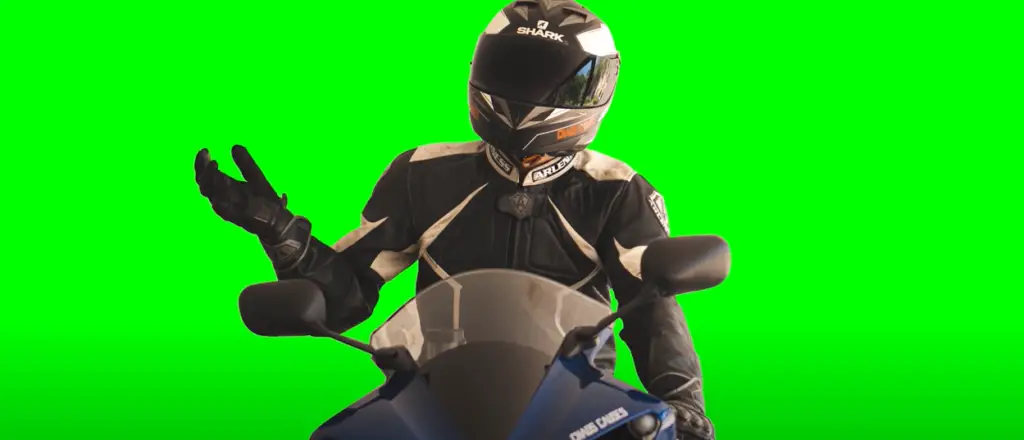
Depends on where you’re going
If you are going somewhere where you won’t need a helmet, or if the environment is not conducive to wearing one, it might make more sense to leave your helmet at home. This could be the case if you’re visiting family or friends and plan on only being in low-speed areas.
Safety can still be achieved without a helmet
Even though helmets offer protection from head injuries, there are other ways to stay safe while riding. Wearing brightly colored clothing can help keep you visible to drivers and cyclists alike. Additionally, staying aware of your surroundings and practicing defensive driving techniques can go a long way toward keeping you safe on the road.
Helmet’s weight
Last but not least, helmets can be quite heavy. This can add a lot of extra weight to your bike and make it harder to maneuver. Instead, try wearing a lighter hat or headband for protection. This will help keep your head protected without the added bulk of a helmet.
Safe neighborhood
If you live in a safe neighborhood where helmet use isn’t necessary, or if you are only traveling very short distances, it may not make sense to bring your helmet with you. Instead of carrying the extra weight and bulk around, leave your helmet at home and focus on enjoying the ride [2].
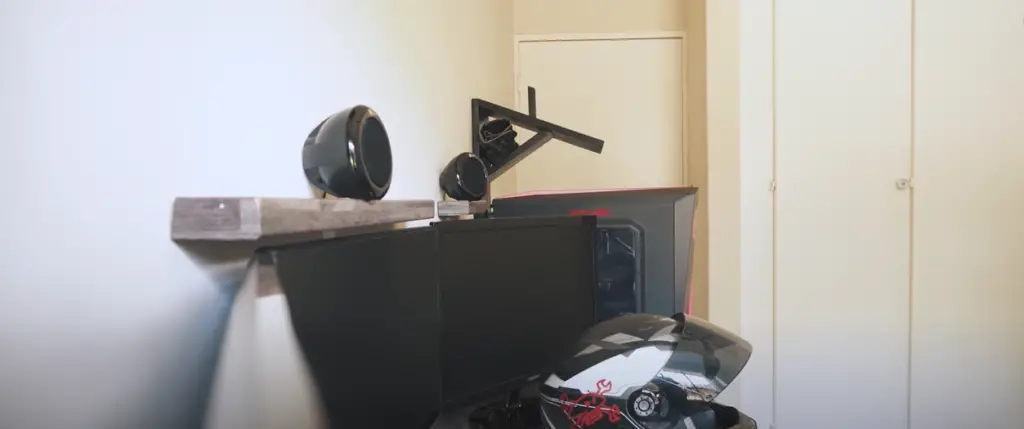
How To Secure Your Helmet with Your Motorcycle?
Using built-in motorcycle lock
Motorcycle locks come in a variety of shapes and sizes, some of which can be used to secure your helmet directly to the motorcycle. The most common type is a built-in lock that is part of the bodywork on the bike. This style of lock generally includes two parts – one for the helmet or other item to be secured and one for the motorcycle itself.
To use this type of lock, simply attach it to your helmet’s D-ring with one part and then attach the other part to a secure location on your motorcycle (such as through a wheel spoke or handlebar). Make sure that you read any instructions from your manufacturer carefully before attempting to install this type of lock, as incorrect installation may lead to damage.
Using a heavy-duty cable lock
A more traditional method of securing your helmet is to use a heavy-duty cable lock and loop the cable through both the helmet’s D-ring and one or more parts of the motorcycle. This type of lock can be bought in most bike stores, and it is best practice to choose one that has been designed specifically for motorcycles. Make sure that you thread the cable through as many parts of your bike as possible – such as through wheel spokes or handlebars – to ensure maximum security. If you are using this type of lock regularly, make sure to lubricate it occasionally with light oil to avoid rusting.
Using a padlock
If you already have a padlock and don’t want to purchase any additional hardware, then you can use that. Simply attach the padlock through both your helmet’s D-ring and a secure location on your motorcycle. Make sure that you thread the lock through as many parts of your bike as possible – such as through wheel spokes or handlebars – to ensure maximum security. You may also wish to wrap the lock in an item of clothing or a towel to prevent it from scratching the motorcycle.
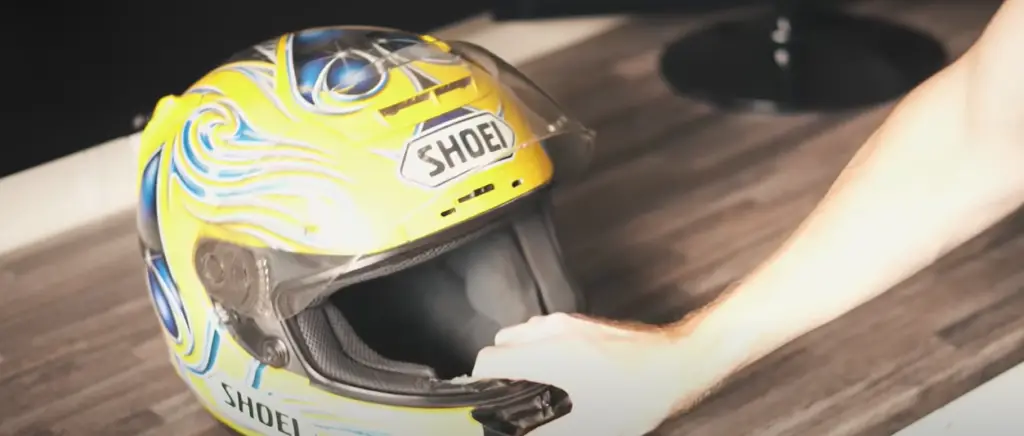
Using Motorcycle Helmet Lock
Another option is to use a motorcycle helmet lock. These locks come in a variety of shapes and sizes, and they are designed specifically for securing a helmet or other items for the motorcycle. They usually include two parts – one for the helmet or other item to be secured and one for the motorcycle itself. To use this type of lock, simply attach it to your helmet’s D-ring with one part and then attach the other part to a secure location on your motorcycle (such as through a wheel spoke or handlebar). Make sure that you read any instructions from your manufacturer carefully before attempting to install these types of locks, as incorrect installation may lead to damage.
Using bicycle chain lock
You can also use a bicycle chain lock to secure your motorcycle helmet. This type of lock is similar to the heavy-duty cable or padlock option but provides more security and flexibility due to its length. To use this type of lock, simply attach it through both your helmet’s D-ring and a secure location on your motorcycle (such as through a wheel spoke or handlebar). Make sure that you thread the chain through as many parts of your bike as possible – such as through wheel spokes or handlebars – to ensure maximum security. If you are using this type of lock regularly, make sure to lubricate it occasionally with light oil to avoid rusting.
Using a pistol lock
You can also use a pistol lock to secure your helmet. These types of locks are designed to be used on firearms and provide an extra level of security when locking away the item they are attached to. To use this type of lock for your motorcycle helmet, simply attach it through both your helmet’s D-ring and a secure location on your motorcycle (such as through a wheel spoke or handlebar). Make sure that you read any instructions from your manufacturer carefully before attempting to install these types of locks, as incorrect installation may lead to damage.
Put in a backpack or other secure location
If you don’t want to attach the helmet to your motorcycle at all, then you can always put it in a backpack or another secure location. This is especially useful if you are parking in an area where theft is common and will ensure that your helmet stays safe and secure while you are away from your bike. Make sure that the backpack or other container is large enough for the helmet to fit securely inside and is not easily accessible by potential thieves [3].
Tips to Decide on What to Do with your helmet
- Decide if you are going to keep it: If you have had your helmet for many years, and it still fits properly and is in good condition, then keeping it may be the best solution. Make sure to inspect it regularly for signs of wear or damage, and replace any parts that need replacing.
- Donate it: Several charities accept donations of bicycle helmets. Your old helmet could help someone stay safe on the roads or trails. Many organizations send gently used helmets abroad to people who otherwise would not have access to them.
- Recycle it: Bicycle helmets contain plastic and foam materials that can be recycled at some facilities. Contact your local recycling center to see if they accept helmets, and always take great care to protect the environment when disposing of your helmet.
- Upcycle it: If you are creative and crafty, there may be ways to upcycle or repurpose your old helmet into something else. From planters to wall decorations, there is a world of possibilities in turning an old helmet into something new and beautiful.
- Sell it: If your helmet is still in good condition, then selling it could be a great way for someone else to benefit from its use. You can post it online at sites like eBay or Craigslist or put an ad in the local paper. Making sure that any potential buyers know that the item has been previously used is important for safety reasons.
- Trade it: You can always barter or trade with someone else if you have something they need and they have something you want in return. Trading a helmet is a great way to get the item you need while helping another person out.
- Give it away: If all else fails, give your old bicycle helmet away to a friend or family member who could use it. This is a great way to help them stay safe without spending any money on a new one.
The drawbacks to carrying your helmet with you
Although it is always best to carry your helmet with you when traveling by motorcycle, some drawbacks need to be considered. First, carrying a full-face helmet on any type of public transportation can be inconvenient and awkward for both the rider and those around them. The large size and bulk of the helmet may make maneuvering difficult in small spaces like buses or elevators. Additionally, other passengers may find it uncomfortable or intrusive to have someone taking up so much space with their helmet.
Finally, carrying a large helmet on public transportation can be tiring and uncomfortable for the rider due to its size and weight. Overall, while it is still best to carry your helmet with you when traveling by motorcycle, these drawbacks must be taken into consideration before doing so. Taking the time to think about these issues beforehand will help ensure that both you and those around you have a safe and comfortable journey.

FAQ
How do you store a motorcycle helmet when parked?
When parking your motorcycle, you can store the helmet in a few different places. The most common is to hang it from the handlebars, although this isn’t always possible depending on the type of bike you have. You could also use bungee cords or even a dedicated helmet hook if your bike has one. If your bike doesn’t have any place for hanging helmets, there are other options available.
Some people choose to use backpacks and special bags designed specifically for carrying and storing helmets while riding. Other riders opt to keep their helmets in saddlebags or rear panniers when they are not using them. Whichever storage option you choose, make sure it is secure and won’t get damaged while traveling!
What to do with the helmet when locking up the bike?
When locking up your bike, you should always take the helmet with you. Leaving it on the bike can tempt thieves, who are after both the helmet and the bike itself. If there is no place to securely store your helmet when locking up the bike, carry it with you or find a secure location nearby where you can put it for safekeeping. Additionally, make sure that wherever you choose to store it is out of sight of passersby so as not to draw unwanted attention. Taking even these few extra precautions will go a long way in keeping your motorcycle and its accessories safe!
Where should I leave my helmet on my bike?
When leaving your helmet on the bike, make sure it is secure and won’t be damaged. The best place to put it is typically hanging from the handlebars or on a dedicated helmet hook if your bike has one. However, this isn’t always possible depending on the type of bike you have. Other options include placing it in saddlebags or rear panniers if they are large enough to accommodate the helmet. Finally, you could use bungee cords or straps to attach the helmet to your bike securely while still allowing for easy access when you need it. Like with all other protective gear, make sure that wherever you decide to leave your helmet, it will stay safe and out of sight!
Useful Video: How to Carry Passenger Helmet on a Motorcycle!
Conclusion
When you park, you can hold a motorcycle helmet, or simply lock it to the bike, depending on your preference. You should also choose an appropriate parking location and learn any relevant local laws. When you park a motorcycle, be sure to shut off the engine and engage the kickstand, then use a disc lock or chain for extra security. Remember that taking proper safety precautions is always important, such as wearing a helmet and protective gear while riding. By doing all of these things, you can help ensure that your motorcycle stays safe from thieves or weather damage when parked. So, park smartly and safely!
References:
References
- https://www.bestbeginnermotorcycles.com/ultimate-motorcycle-helmet-guide/
- https://bikerestart.com/heres-what-to-do-with-the-motorcycle-helmet-when-parked/
- https://www.lazerhelmets.com/use-a-helmet-lock-on-a-motorcycle/

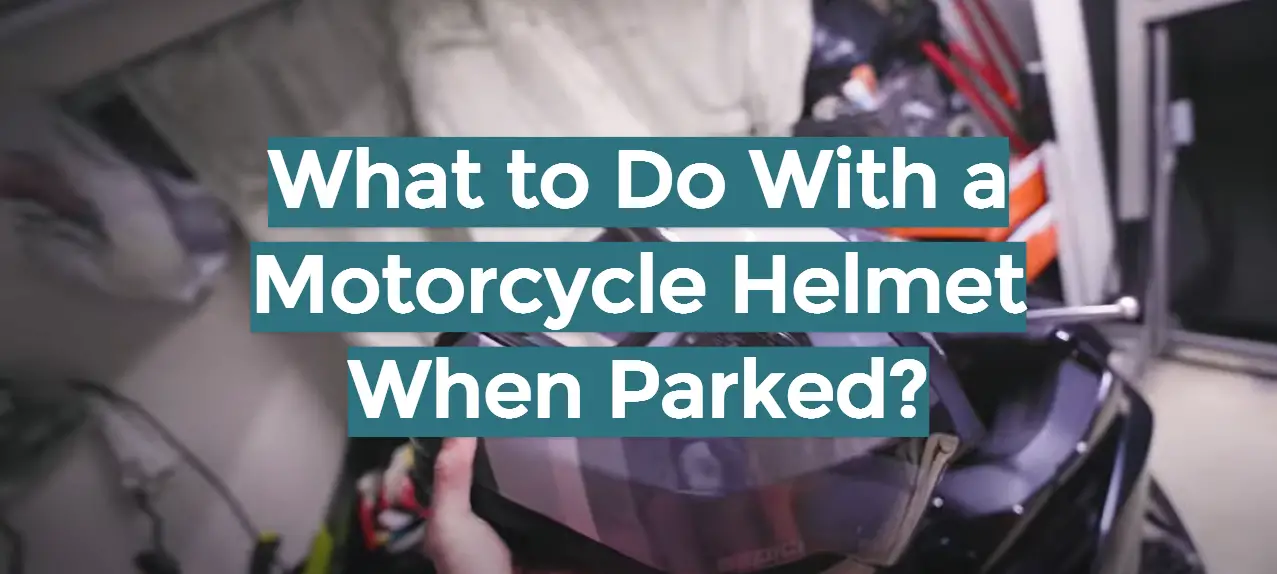

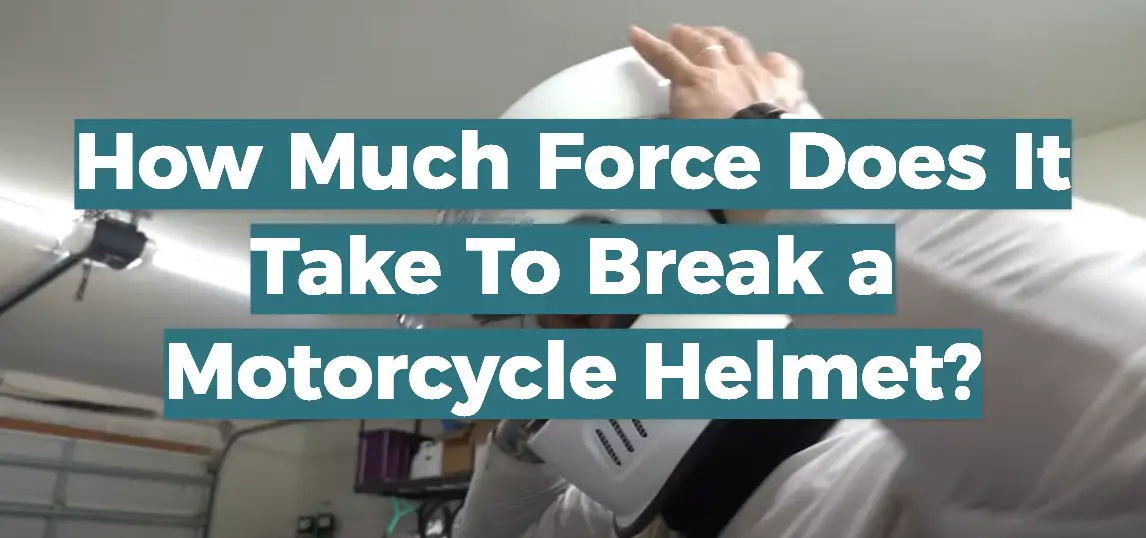
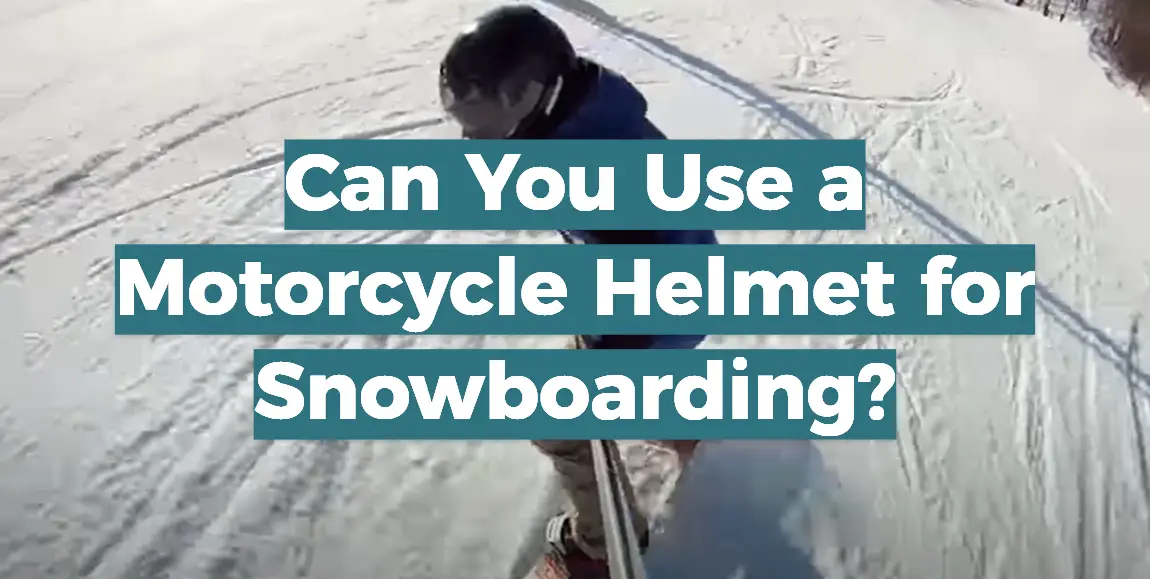
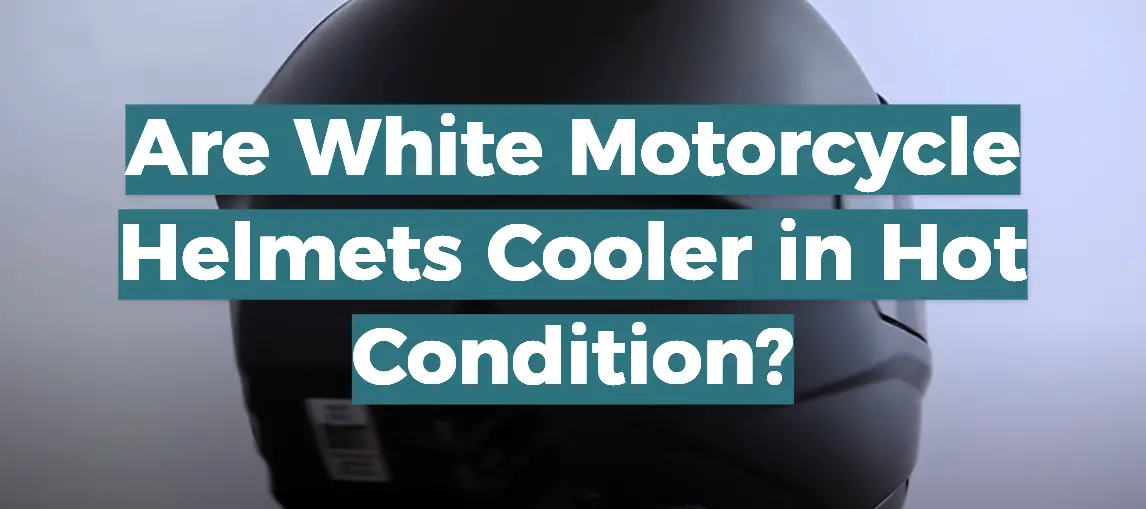
Leave a Reply